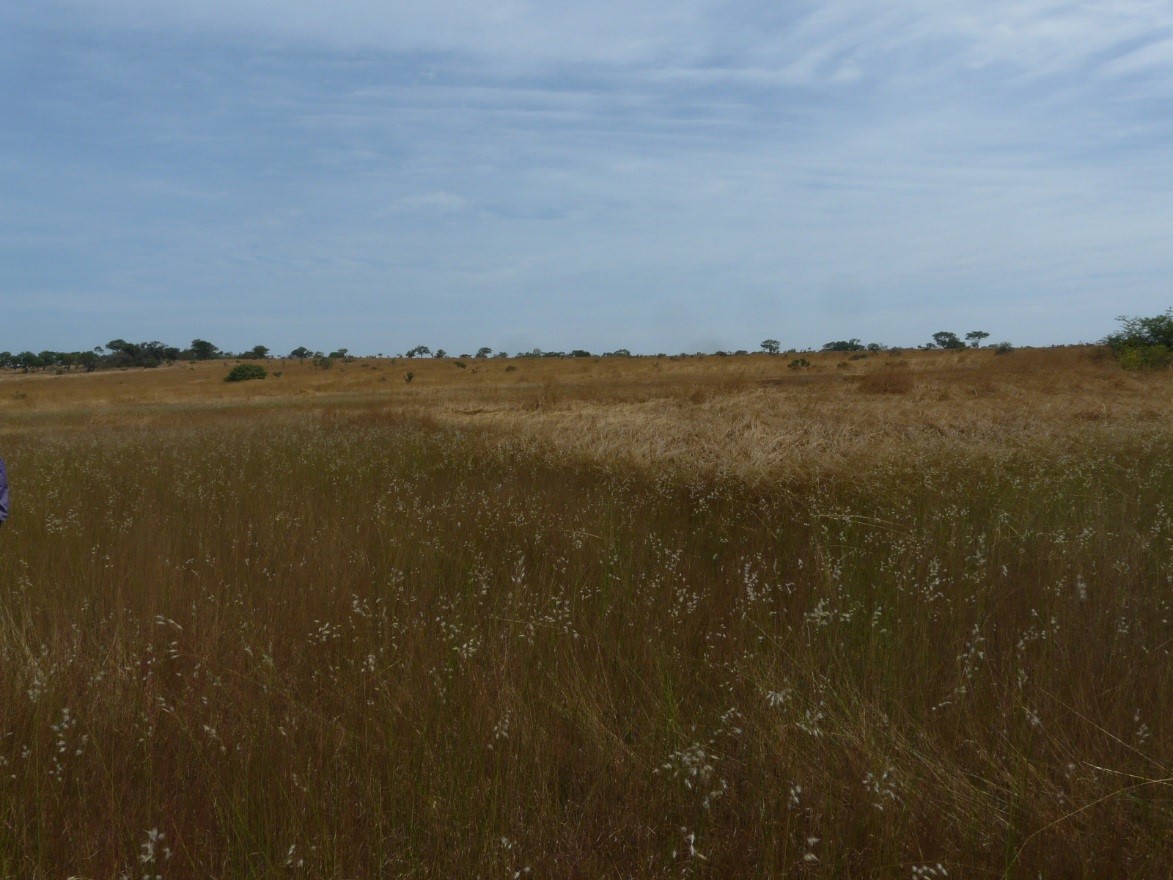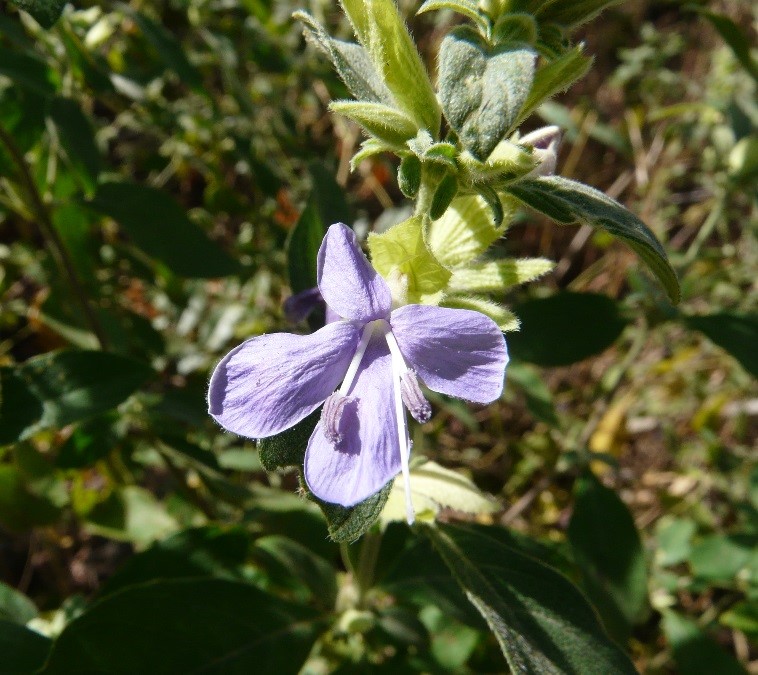
Country: Guinea
Administrative region: Dinguiraye (Prefecture)
Central co-ordinates: 11.54056 N, 11.23417 W
Area: 6426.17km²
Qualifying IPA Criteria
A(i)Site contains one or more globally threatened species, B(ii)Site contains an exceptional number of species of high conservation importance, C(iii)Site contains nationally threatened or restricted habitat or vegetation types, AND/OR habitats that have severely declined in extent nationally
IPA assessment rationale
The proposed Moyen Bafing National Park (MBNP) has 19 threatened species present across different vegetation types. It is the only known location where two Global endemic species are known to survive (Barleria asterotricha and Dissotis linearis) and has important populations of the globally threatened species Lipotriche felicis, Cyathula pobeguinii, Macropodiella garrettii, Danthoniopsis chevalieri and Leocus pobeguinii for which Moyen Bafing contains the only known records (or the only known recent records). Four potential new species have been identified in 2018, all of which are likely to prove critically endangered and potentially globally endemic to Moyen Bafing. In addition, three additional new records for Guinea were discovered. The landscape is under severe pressure from the large local population within the park and the sizeable herds of cattle.
Site description
The proposed Moyen Bafing National Park (MBNP) is in the north-east of the Fouta Djallon, straddling the prefectures of Tougué and Dinguiraye. The area extends southwards from the Mali border and encompasses six Classified Forests. It covers a large section of the Bafing river catchment, tributaries of the Falémé river, as well as the Koukoutamba and Téné rivers in the southern part of the park. It is a matrix of vegetation types, including lateritic bowal (bauxite based), wooded grassland, and woodland. It has an altitudinal range of 500m and the highest point (935m) is in the south of the park, at Kourousansan. The rivers have a number of cascades and rapid sections which are home to rare Podostemaceae. It has been designated largely for the large population of Chimpanzees (a population of 3,715 mature individuals) present, as well as other large mammals found predominantly in gallery forest and woodland within the park (listed as priority vegetation types for management in the park). There are 233 villages, 7 hamlets, and 15 camps within the provisional park boundary. This area is made up of three protected zones (ZIP, ZGR, and ZD).


Botanical significance
Three botanical expeditions to the MBNP in 2018 have shown that, despite the fragmented and highly disturbed nature of the vegetation, there are 19 threatened species present, found across a range of habitat types. In the rapids and cascades, five species of Podostemaceae have been found. In addition, the park has the largest global populations of Barleria asterotricha (EN) and Dissotis linearis (EN), both endemic to Guinea. A recent collection of Lipotriche felicis (EN) was the first collection in Guinea since 1937, and only the third collection globally. There were four potential new species and three new records for Guinea identified in November 2018. The whole park has not been surveyed, so it is possible that more threatened species could be discovered with further surveys.
Habitat and geology
The geology is mostly sandstone, argillite interlayered with limestone, and silica with igneous intrusions. It has a matrix of grassland including lateritic bowal (mostly bauxite based), wooded grassland, and woodland, with small areas of gallery forest. Several large rivers run through the park (Bafing, Koukoutamba, Téné – tributaries of the Falémé in the north and the Bakoun and Kokoun in the centre), with many tributaries and temporary rivers feeding into them. The length of the hydrological network within the park is 4,214km, including 148km of the Bafing River.
Conservation issues
Due to the large human population (c. 67,000 people) within the park, there are significant threats from clearance for fields and cattle grazing. In addition, there are small-scale mining activities and the setting of uncontrolled fires. There are large herds of Ndama cattle across the park and this leads to burning of the grassland for pasture. The increased frequency of burning has almost certainly influenced the species diversity. Some of the bowal areas are also threatened from gravel extraction on a local scale and are also potential sites of mining activities (bauxite). The alluvial areas are also potential sites for gold panning. The potential construction of a hydroelectric dam at the Koukoutamba Falls on the Bafing river (a tributary of the Senegal river) will cause considerable damage to both the populations of threatened Podostemaceae species and threatened habitats. It is predicted that the reservoir for the dam will cover 3.5% of the southern part of the park. The park itself will protect 24% of the hydrological network that will feed the hydroelectric dam.
Ecosystem services
Provisioning, Habitat for species.
Site assessor(s)
Charlotte Couch, Royal Botanic Gardens Kew
Denise Molmou, Herbier National de Guinee/ Simfer
Arnaud Gotanegre, Wild Chimpanzee Foundataion
Martin Cheek, Royal Botanic Gardens Kew
Pacifique Kizila, Wild Chimpanzee Foundataion
Melanie Sottocasa, Wild Chimpanzee Foundataion
Camille Reider, Wild Chimpanzee Foundation (WCF)
IPA criterion A species
| Species | Qualifying sub-criterion | ≥ 1% of global population | ≥ 5% of national population | 1 of 5 best sites nationally | Entire global population | Socio-economically important | Abundance at site |
|---|---|---|---|---|---|---|---|
| Barleria asterotricha Benoist | A(i) |  |
 |
 |
 |
 |
Frequent |
| Mesanthemum tuberosum Lecomte | A(i) |  |
 |
 |
 |
 |
Scarce |
| Cyathula pobeguinii Jacq.-Fél. | A(i) |  |
 |
 |
 |
 |
Scarce |
| Lipotriche felicis (C.D.Adams) D.J.N.Hind | A(i) |  |
 |
 |
 |
 |
Occasional |
| Leocus pobeguinii (Hutch. & Dalziel) J.K.Morton | A(i) |  |
 |
 |
 |
 |
Scarce |
| Afzelia africana Sm. ex Pers. | A(i) |  |
 |
 |
 |
 |
Frequent |
| Pterocarpus erinaceus Poir. | A(i) |  |
 |
 |
 |
 |
Common |
| Acridocarpus spectabilis (Nied.) Doorn-Hoekm. | A(i) |  |
 |
 |
 |
 |
Frequent |
| Dissotis linearis Jacq.-Fél. | A(i) |  |
 |
 |
 |
 |
Scarce |
| Khaya senegalensis A.Juss. | A(i) |  |
 |
 |
 |
 |
Common |
| Embelia djalonensis A.Chev. ex Hutch. & Dalziel | A(i) |  |
 |
 |
 |
 |
Scarce |
| Inversodicraea koukoutamba Cheek | A(i) |  |
 |
 |
 |
 |
Abundant |
| Stonesia taylorii C.Cusset | A(i) |  |
 |
 |
 |
 |
Frequent |
| Inversodicraea harrisii (C.Cusset) Cheek | A(i) |  |
 |
 |
 |
 |
Frequent |
| Lebbiea grandiflora Cheek | A(i) |  |
 |
 |
 |
 |
Frequent |
| Pavetta lasioclada (K.Krause) Mildbr. ex. Bremek. | A(i) |  |
 |
 |
 |
 |
Frequent |
| Vitellaria paradoxa C.F.Gaertn. | A(i) |  |
 |
 |
 |
 |
Common |
| Macropodiella garrettii (C. H. Wright) C.Cusset | A(iv) |  |
 |
 |
 |
 |
Frequent |
| Calophyllum africanum Cheek & Q.Luke | A(i) |  |
 |
 |
 |
 |
Frequent |
| Barleria maclaudii Benoist | A(i) |  |
 |
 |
 |
 |
Scarce |
Barleria asterotricha Benoist





Mesanthemum tuberosum Lecomte





Cyathula pobeguinii Jacq.-Fél.





Lipotriche felicis (C.D.Adams) D.J.N.Hind





Leocus pobeguinii (Hutch. & Dalziel) J.K.Morton





Afzelia africana Sm. ex Pers.





Pterocarpus erinaceus Poir.





Acridocarpus spectabilis (Nied.) Doorn-Hoekm.





Dissotis linearis Jacq.-Fél.





Khaya senegalensis A.Juss.





Embelia djalonensis A.Chev. ex Hutch. & Dalziel





Inversodicraea koukoutamba Cheek





Stonesia taylorii C.Cusset





Inversodicraea harrisii (C.Cusset) Cheek





Lebbiea grandiflora Cheek





Pavetta lasioclada (K.Krause) Mildbr. ex. Bremek.





Vitellaria paradoxa C.F.Gaertn.





Macropodiella garrettii (C. H. Wright) C.Cusset





Calophyllum africanum Cheek & Q.Luke





Barleria maclaudii Benoist





IPA criterion C qualifying habitats
| Habitat | Qualifying sub-criterion | ≥ 5% of national resource | ≥ 10% of national resource | 1 of 5 best sites nationally | Areal coverage at site |
|---|---|---|---|---|---|
| Waterfalls and Rapids | C(iii) |  |
 |
 |
877 |
| High Altitude Sandstone Bowal Grasslands | C(iii) |  |
 |
 |
Waterfalls and Rapids


High Altitude Sandstone Bowal Grasslands


General site habitats
| General site habitat | Percent coverage | Importance |
|---|---|---|
| Forest - Subtropical/Tropical Dry Forest |  |
Minor |
| Grassland - Subtropical/Tropical Seasonally Wet/Flooded Lowland Grassland |  |
Major |
| Grassland - Subtropical/Tropical High Altitude Grassland |  |
Major |
| Wetlands (inland) - Permanent Rivers, Streams, Creeks [includes waterfalls] |  |
Major |
| Wetlands (inland) - Seasonal/Intermittent/Irregular Rivers, Streams, Creeks |  |
Minor |
| Wetlands (inland) - Seasonal/Intermittent Freshwater Marshes/Pools [under 8 ha] |  |
Minor |
Forest - Subtropical/Tropical Dry Forest

Grassland - Subtropical/Tropical Seasonally Wet/Flooded Lowland Grassland

Grassland - Subtropical/Tropical High Altitude Grassland

Wetlands (inland) - Permanent Rivers, Streams, Creeks [includes waterfalls]

Wetlands (inland) - Seasonal/Intermittent/Irregular Rivers, Streams, Creeks

Wetlands (inland) - Seasonal/Intermittent Freshwater Marshes/Pools [under 8 ha]

Land use types
| Land use type | Percent coverage | Importance |
|---|---|---|
| Nature conservation |  |
Major |
| Agriculture (arable) |  |
Minor |
| Agriculture (pastoral) |  |
Major |
| Industrial development |  |
Unknown |
| Extractive industry |  |
Minor |
Nature conservation

Agriculture (arable)

Agriculture (pastoral)

Industrial development

Extractive industry

Threats
| Threat | Severity | Timing |
|---|---|---|
| Agriculture & aquaculture - Annual & perennial non-timber crops - Small-holder farming | Medium | Ongoing - stable |
| Agriculture & aquaculture - Livestock farming & ranching - Small-holder grazing, ranching or farming | High | Ongoing - increasing |
| Energy production & mining - Mining & quarrying | Medium | Future - planned activity |
| Energy production & mining - Renewable energy | High | Future - planned activity |
| Natural system modifications - Fire & fire suppression - Increase in fire frequency/intensity | High | Ongoing - increasing |
Agriculture & aquaculture - Annual & perennial non-timber crops - Small-holder farming
Agriculture & aquaculture - Livestock farming & ranching - Small-holder grazing, ranching or farming
Energy production & mining - Mining & quarrying
Energy production & mining - Renewable energy
Natural system modifications - Fire & fire suppression - Increase in fire frequency/intensity
Protected areas
| Protected area name | Protected area type | Relationship with IPA | Areal overlap |
|---|---|---|---|
| Moyen Bafing National Park | National Park | protected/conservation area matches IPA | 6426 |
Moyen Bafing National Park
Management type
| Management type | Description | Year started | Year finished |
|---|---|---|---|
| Site management plan in place | The Guinean government authorised the process of creation for the proposed MBNP in 2017, by a ministerial decree. The TIPA is encompassed by the protected area. A 2018-2020 action plan is available and will lead to a development and management plan by the end of 2020. | 2018 | 2020 |
Site management plan in place
Bibliography
Threatened plants species of Guinea-Conakry: A preliminary checklist
Peerj Preprints
IUCN Red List
Plan d’action du projet de création du Parc national du Moyen-Bafing. Version 4.
Trois Rapports de terrain préparés pour Wild Chimpanzee Foundation
Recommended citation
Charlotte Couch, Denise Molmou, Arnaud Gotanegre, Martin Cheek, Pacifique Kizila, Melanie Sottocasa, Camille Reider (2024) Tropical Important Plant Areas Explorer: Moyen Bafing National Park (Guinea). https://tipas.kew.org/site/proposed-moyen-bafing-national-park/ (Accessed on 27/07/2024)


